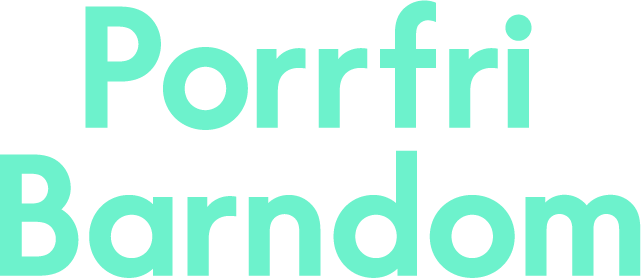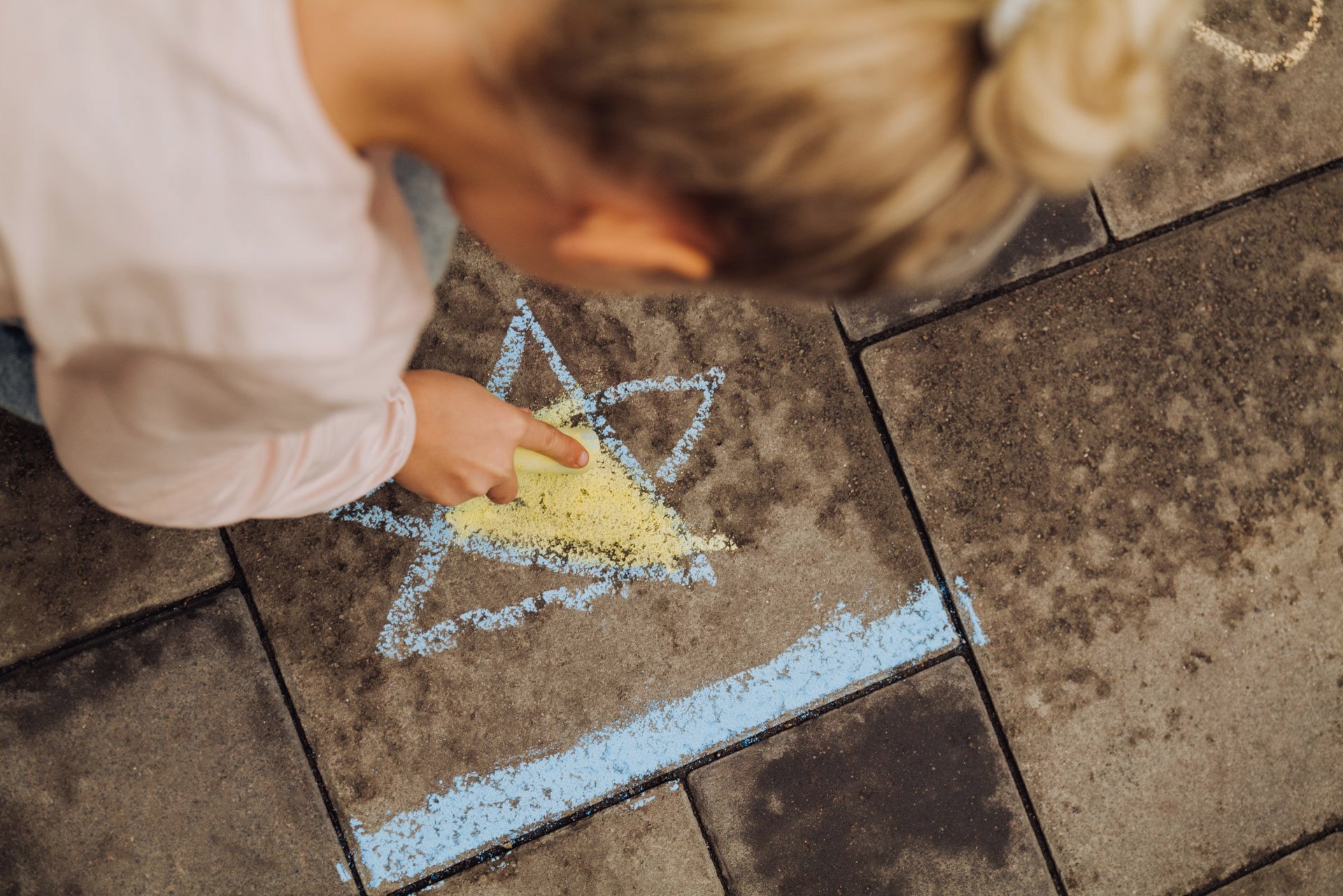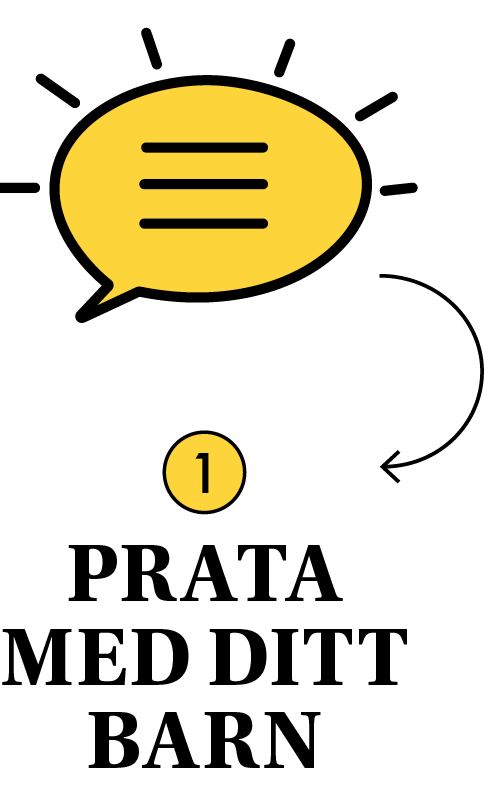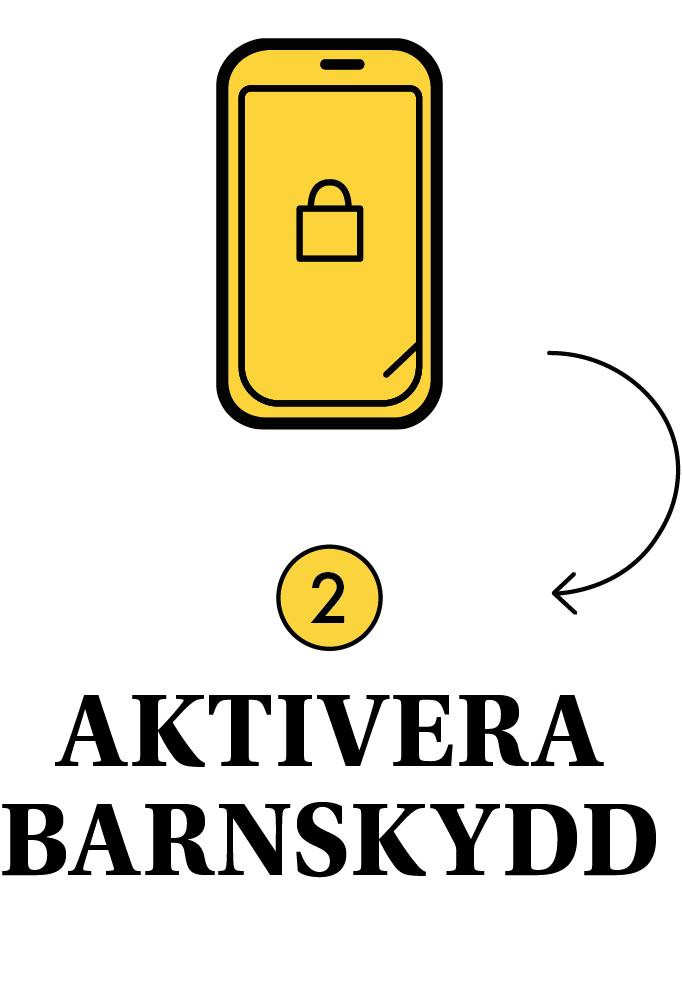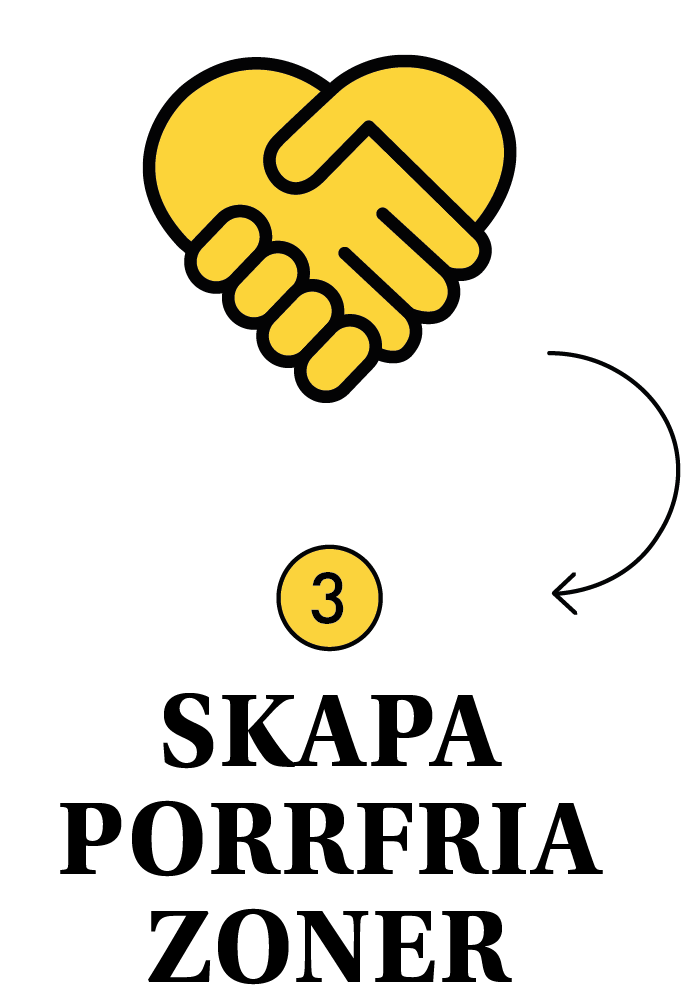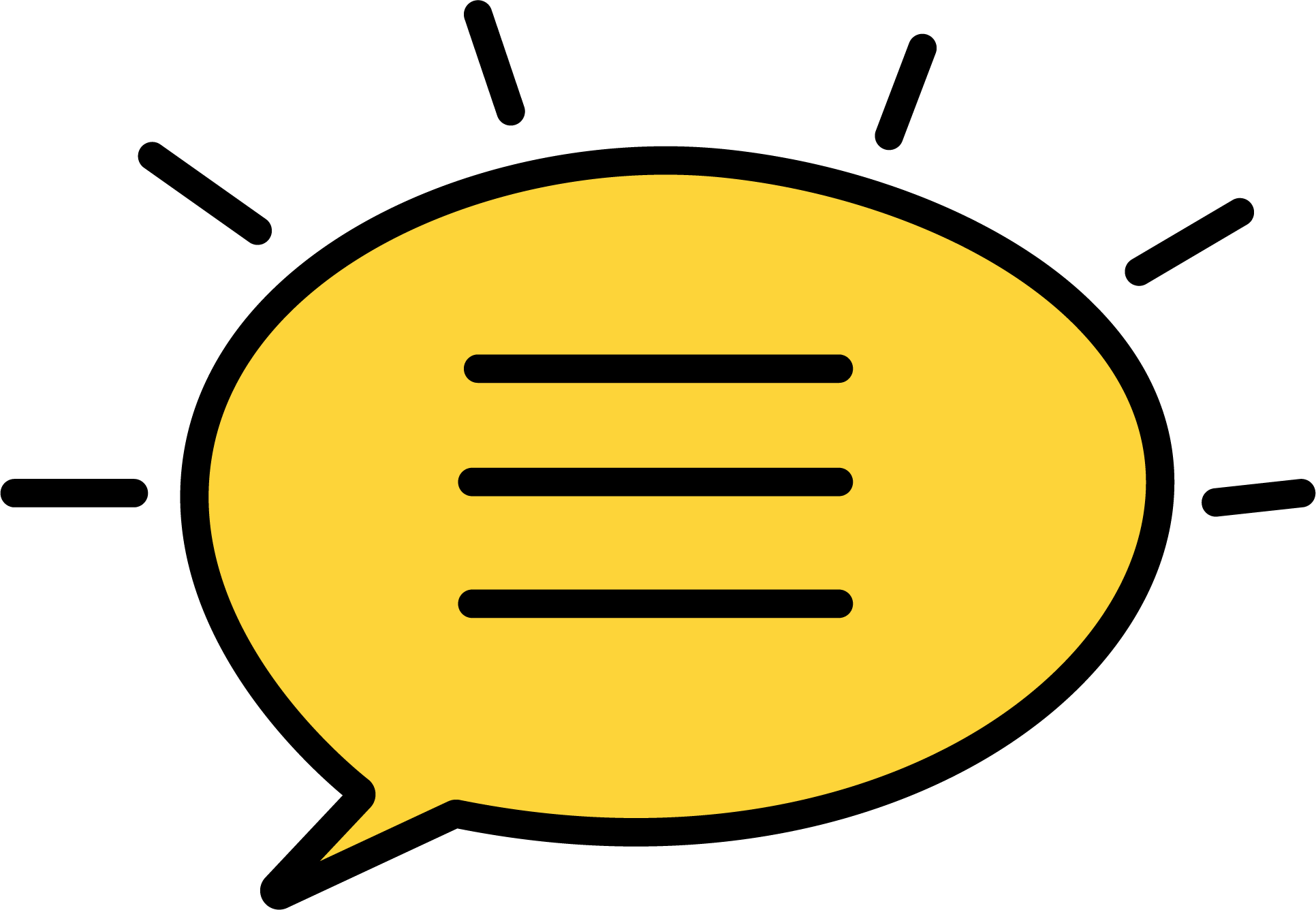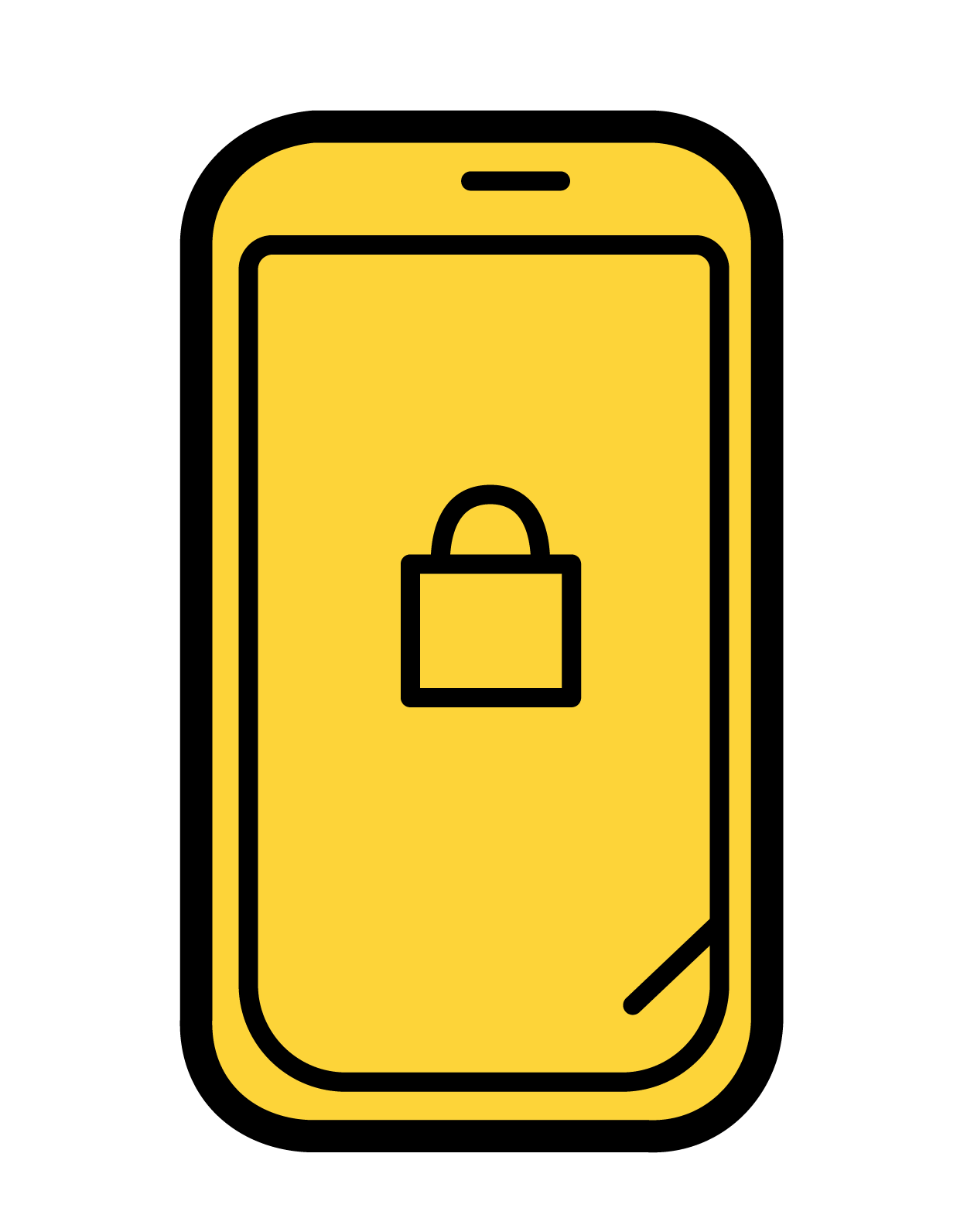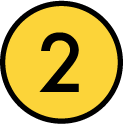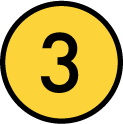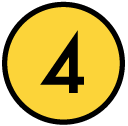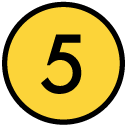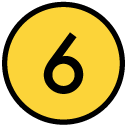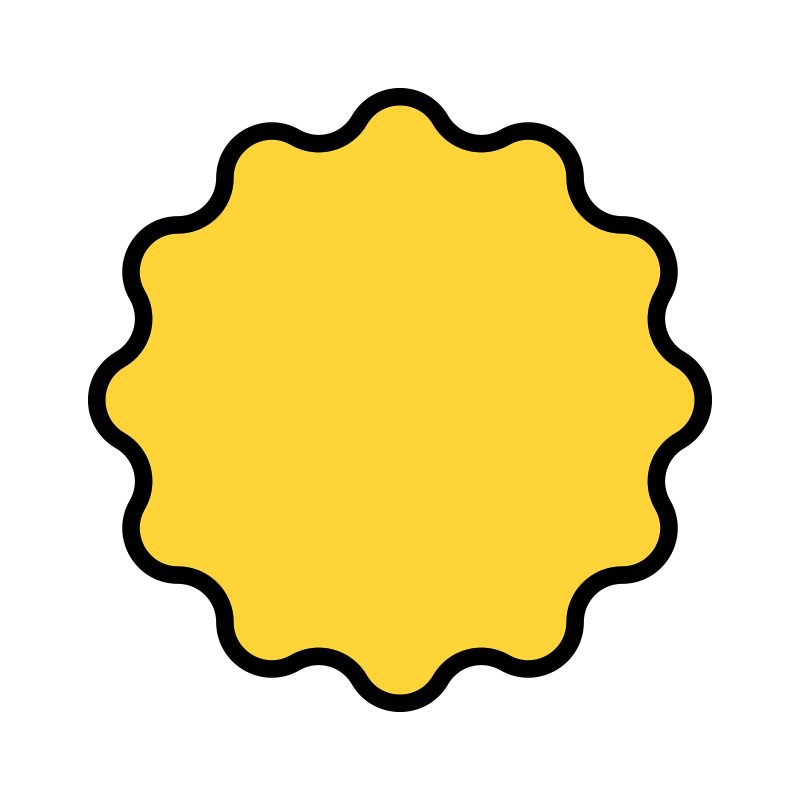INCREASE SAFETY
AROUND YOUR CHILD:
Many children in primary school have seen pornography.
This page contains tips
on how to talk to your child
about pornography.
These tips have been developed in consultation
with psychologists, therapists
and other experts.
Consultation means
that everyone has worked together.
Children of the same age
may have experienced different things
and have different levels of experience.
Therefore, it is important
to adapt the conversation
to your child.
If your child is in preschool or primary school
it is also important to talk
about private body parts and consent.
Is your child a teenager?
Go to the Teenagers tab
It is common for us adults to think:
My child is too young or has no interest in such things.
It's probably not that serious!
My child tells me everything.
It's too hard to think about.
I am afraid to make mistakes.
I will take it later.
Since many children in primary school
have already seen porn
it is important that you adapt the conversation
to your child.
We call it
taking the porn talk!
This is how we can help children.
Find out how to talk in an age-appropriate way
& improve your online safety in 3 easy steps:
STEP 1:
TALK TO YOUR CHILD
SIMPLE EXPERT TIPS
FOR PARENTS OF CHILDREN
IN PRE-SCHOOL & PRIMARY SCHOOL:
-
If your child does not know the word porn
, it is better to use another word.Instead, you can tell
that there are things on the internet
that are not good for children.
For example, pictures and videos
that show private body parts.If your child does not know the word porn
and you tell them what it is
, there is a risk that they will google
and end up on porn sites. -
There are places on your body
that are called private.
No one else can touch
your private body parts.If your child has not already learned
which body parts are private
, it is important that you tell them.There is a good material
that is used in preschools.
It is called "Stop my body",
and is written by the organization Save the Children.Click here to access the material.
You can use the material
with your child
to talk about private body parts.
Tell them that:- The private parts of the body are:
Dick
Nose
Buttocks
Mouth
Inner thighs
Breasts for older girls- Your private body parts are yours
and each person
can only touch their own.- The whole body should be respected.
This means that no one should touch your body
in a way that does not feel good for you. -
When we touch each other
there must be consent.Consent means
that the person who wants to do something asks first,
and respects the answer.Adults can show children
that consent is important.
We can do this by asking the child
if they want a hug
We can both ask with words
but also show with the body
by stretching out our arms.
It is important to listen to the child
and not force a hug
if they have not said or shown a yes.
Tell them that:
- It should always feel good
when someone touches you.
It should also feel good
before and after. -
If children are taught early
to ask before touching someone
, it will be easier for children
to take no
and to say no themselves.
There is a good book on consent
that is used in preschools.
The book is called "Okej med dej"
and is written by Make Equal.
Click here to read the book.
Tell me that:- If you want to hug or tickle someone
, you must ask first.If you want to be hugged or tickled
, it is your responsibility to ask.- We may be disappointed, angry or sad
if we get a "no".
It is okay to feel this way
but we must still respect
that the person does not want to.- It's okay to say no
even if someone else is disappointed.
Saying noWe can say no in different ways.
We can say yes or no with words
or show with the body.
Any answer that is not a clear yes
is a no.
We can also help the child
to practise saying no
by preparing answers
for when children don't want a hug
for example.
The answer could be:
- No thanks, no more hugs today.
- Here's a high five instead."
Tell them that:
- It is never okay
to persuade someone
or to nag them until they say yes.- We can say no in different ways:
"Wait" means no
"I'm not sure" means no
"Not now" means no
"I have changed my mind" means no
"Stop" means no
"It hurts" means no
- Some no's are more difficult to understand.
If you are unsure of the answer
always ask what the person wants
or does not want.
Questions you can ask the child:- How can you say no
without using the word no?
- What can a no look like
if you use your body to show? -
Many children do not tell adults
if they have watched porn
or happened to see porn.To encourage more children to tell
you can ask them to think about
which adults they feel most safe with.
This could be at school, at
after school or at home with their best friend.
When the child has thought about this in advance
the child is more likely
to seek out that adult
if something bad happens.
Ask the same question every three months
so that the child can remember
or wants to choose another adult
that the child feels safe with.
Questions you can ask the child:- Who at school
would you most like to talk to
if something
happens that doesn't feel good in your stomach? -
As adults, we can feel many different emotions
if we find out that a child has been watching porn.If we adults get angry or react strongly
there is a risk that the child will not want to tell
if something happens again.
Show the child that you want to listen
no matter what the child tells you.
It shouldn't matter
if the child has looked up porn
or if someone has shown
or if the child is just curious about porn.Remember:
- Try to pause your own feelings
and focus on the child's feelings.- Talk calmly
and show that you don't get angry.- Not blaming the child.
Instead, praise the child
for daring to tell you.
Tell them that:- I will always support you
and help you.- Thank you for telling me.
I am glad you are talking to me
and telling me what happened. -
Sometimes children feel guilt or shame
after watching porn.It means that the child feels
that they have done something wrong
or have disappointed someone.
Tell them that:- It is not your fault.
- I am not angry with you.
- It is up to us adults to make sure
that children do not see things
that are not good.I will do my best
to make sure it doesn't happen again. -
The internet is an important part
of many children's lives.
That's why we adults need to keep an eye
on what our children are doing online.Therefore, it is important that we adults
take an interest in what the child is doing on the
internet.Sit next to your child
when they use the internet
and ask them what they are doing.
When you show interest in your child
you build trust
and your child may feel
that it is easier to trust you.
Question:- Would you like to show me something
that you think is fun to do?
- Would you like to teach me about an app
that you use? -
There is a recommended age
for some social media
to protect children.This means that users
must be of a certain age
to use the app or website.It is important to follow
the recommended age
for different social media.Talk to other parents
at your child's school or group of friends
and agree
to follow the recommended ages
on different social media and games.You can also try
to raise the issue at a parents' meeting
or send an email with suggestions.When more parents do the same
, it becomes easier for children
to accept what is decided.We call it creating together
porn-free zones
around our children.
Remember:
- Children sometimes manage to create accounts
on some social media
even though there is an age limit.- Companies and actors
who make pornographic films
also use social media
to advertise.- Children using social media
may see porn or links to porn
in their feeds
even if we do not search for porn. -
It is common
for children to send links to each other.Sometimes the content of the links
can be harmful to children.
For example, links to porn sites.This is why it is important
to tell your child
to be careful
when someone sends a link.
Tell them that:- If you receive a link from someone
and click on it
, you may see things
that make you feel scared
or uncomfortable.If you are unsure
about what is in the link
, ask an adult
before clicking on the link.- I will never get mad at you
if something happens
that makes you feel bad. -
When your child sees
others using social media
or starts using it themselves,
there is a risk that they will be contacted
by adults who want to trick them.For example, adults can
persuade and threaten children
to send nude photos
of themselves, siblings or friends.This is called grooming and is illegal.
Therefore, it is important
for you as a parent to know
who your child is in contact with.It is also important
that children do not share
private information.
For example, name, home address
and name of their school.Click here to go to the police website
where you can read more about grooming.
Remember:- Teaching children about private body parts.
Click here to read more
on how to do it.- Don't get angry with your child
when they tell you
about something bad happening on the internet
that doesn't feel good.Instead, thank your child
for telling you!- All crimes against children
should be reported to the police.- If you need support
you can contact a school counselor.
Tell them that:- There are adults on the internet
who want to hurt children.- Sometimes people on the internet
can lie about who they are.- They may say they are a child
who wants to be a friend
when they are really an adult.Therefore, it is important
not to tell too much about yourself.
For example, your home address
or the name of your school.- No one should ask you to take and send pictures
of your or other people's private body parts.
Then you should tell an adult
that you feel safe with. -
It is common for guys
to send naked pictures to girls
and for girls to send naked pictures
of themselves.Naked pictures are sometimes called nudes.
Another word for a picture of a guy's dick
is dickpic.Sometimes pictures and videos of children
can end up on porn sites
and it can be very difficult
to remove them from there.Click here to access the website dittecpat.se
Children can get help
to try to remove nude photos
that have been circulated online.
Remember:- Don't get angry with your child
if they tell you
that they have sent a naked picture
which is now being circulated.- Don't get angry with your child.
Thank your child
for telling you!Tell me that:
- A nude image is an image
that shows a private body part.No adult can send you naked pictures
and no one can ask you or threaten you
to send a naked picture.- If you send a nude picture to someone
, it can easily be spread
to other people or websites
and remain there forever.If this happens
, it is important that you tell
an adult.- It is never your fault
if naked pictures of you are spread.
TIPS FOR
GETTING STARTED
WITH THE TALK
It can be helpful to talk to your child
in an everyday situation
where you are both relaxed.
For example, on a walk
or while cooking.
Start by asking questions in the third person.
This means talking about other people
instead of saying YOU.
This makes it easier for the child
to start talking about porn.
Example:
Say: "Has anyone in your class
looked at or shown nude pictures
or movies?"Ask if the child is curious about sex.
If the child answers yes
you can say that you understand
and then ask
what the child would like to know.To start the conversation, try
putting a book on the kitchen table
about sex, the body
or consent.
The book should be age-appropriate.Gaining knowledge is good
but don't wait too long
for the perfect talk.
If you wait too long
there is a risk that the child will see porn
before you have talked about it.
No child should be left alone
with their experience of porn.Children want to talk to adults
about both good and bad things
but may find it difficult
to bring it up themselves.
That's why we adults
need to help!Remember that you and your child
have talked about difficult things before.
Maybe your child saw something scary on TV
or has seen bullying at school.
You know your child best.
Trust your relationship.You can do it!
The expert tips have been developed in consultation with our experts in the Inheritance Fund [Swedish Inheritance Fund] project The New Normal, including:
Linn Heed
Licensed psychologist, licensed psychotherapist, sexologist
Brandon Sekitto
Family therapist, intercultural communicator
Lotta Kajving
School counsellor, behavioural scientist and certified sex counsellor
Dani Lind
Producer of the film “High Speed Internet Porn and the Experiment Generation"
Mikis Kanakaris
Activity developer & discussion leader, stiftelsen 1000 Möjligheter & Unga Relationer
STEP 2:
ACTIVATE DIGITAL CHILD PROTECTION
Did you know that Apple & Google, as well as other companies, have their own free digital child protection that you can activate for your child? There’s no such thing as watertight protection, but they limit the risk of younger children being accidentally exposed to sites containing violence and pornography, etc.
Follow the steps below to protect your child from exposure to porn & violence. It's easy, free and only takes 60 seconds! Activate both Apple and Google Child Protection if your child uses Apple products, i.e. an iPhone, iPad or Mac computer.
Apple products (Safari browser)
1. Go to "Settings"
2. Tap on "Screen time"
3. Tap "Content & Privacy Restrictions"
4. Select "Content restrictions"
5. Tap "Web content"
6. Tap "Limit Adult Websites"
7. To further enhance safety on an Apple iPhone, you can tap "Use Screen Time Passcode” under “Screen Time”", click on "Use password for Screen Time" and choose a 4-digit passcode. The code is then requested for access to the sites restricted by Apple.
Also activate Google SafeSearch if your child has an iPhone
1. Visit google.se
2. Tap "Settings"
3. Tap "Search settings", under SafeSearch and select "Filter"
4. Tap "Save" at the bottom of the page
You can optimize the child protection on Google's browser by creating a separate account for the child where you specify the child's age, then Google understands that it is a child using the browser.
DONE!
Below is an even clearer description with screen views.
Activate
Go to “Settings” and tap “Screen Time”
Tap “Content & Privacy Restrictions”
Enable “Content & Privacy Restrictions”
Select “Content Restrictions”
Tap 'Web content'
Tap "Limit Adult Websites"
To further enhance safety on an Apple iPhone, you can tap “Use Screen Time Passcode” under “Screen Time” and choose a 4-digit passcode. The code is then requested for access to the sites restricted by Apple.
DONE!
Also activate Google SafeSearch if your child has an iPhone
Google SafeSearch
Visit google.se
Tap “Settings”
Tap “Search settings”, under SafeSearch and select “Filter"
Tap “Save” at the bottom of the page
DONE!
Also activate it on iPads and computers.
Also activate Google SafeSearch if your child has an iPhone or an Android phone.
STEP 3:
CREATE PORNOGRAPHY-FREE ZONES AROUND YOUR CHILD
WHY DOES
DIGITAL CHILD PROTECTION EXIST?
Digital child safeguards are in place
to prevent children from accidentally viewing pornography
when using the internet.
No digital child protection is completely safe/is not the only solution.
And that's why we adults must
talk to children about porn.
It is also important
that you as a parent or adult
talk to your child about pornography.
It is also important
how you talk to your child
about porn.
The talk must be appropriate to the age
of your child.
We call it
to talk age-appropriately.
